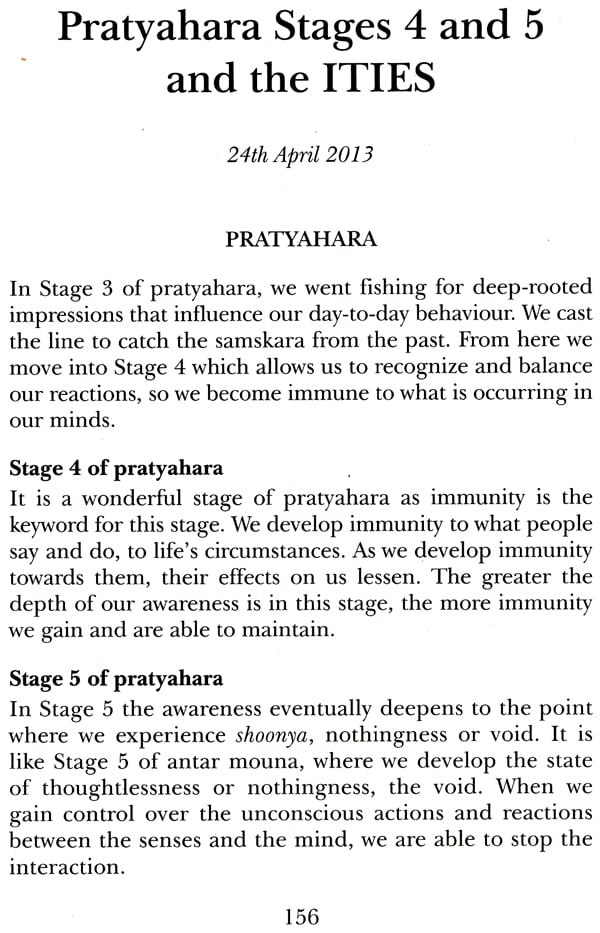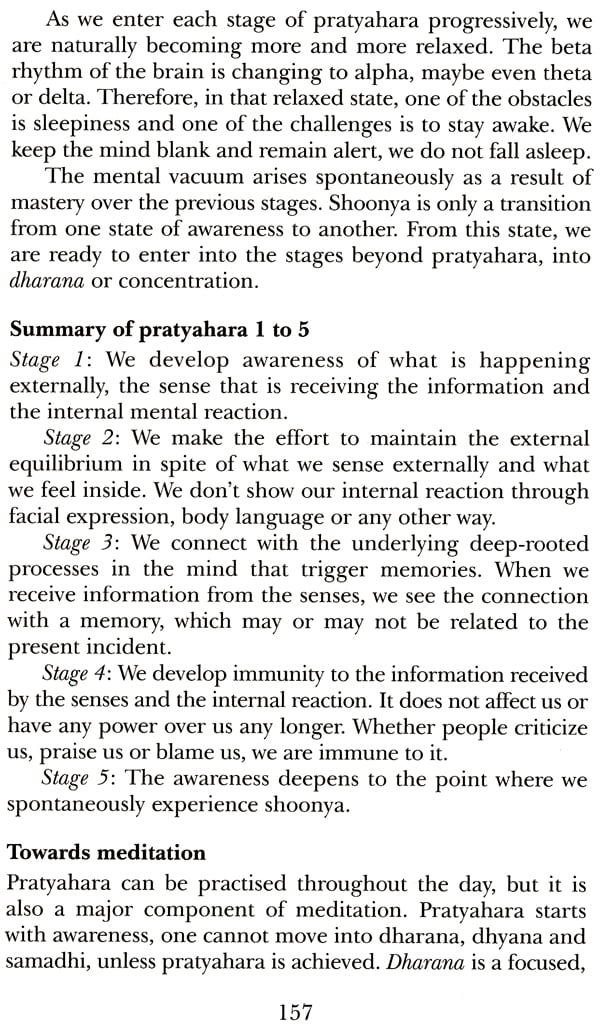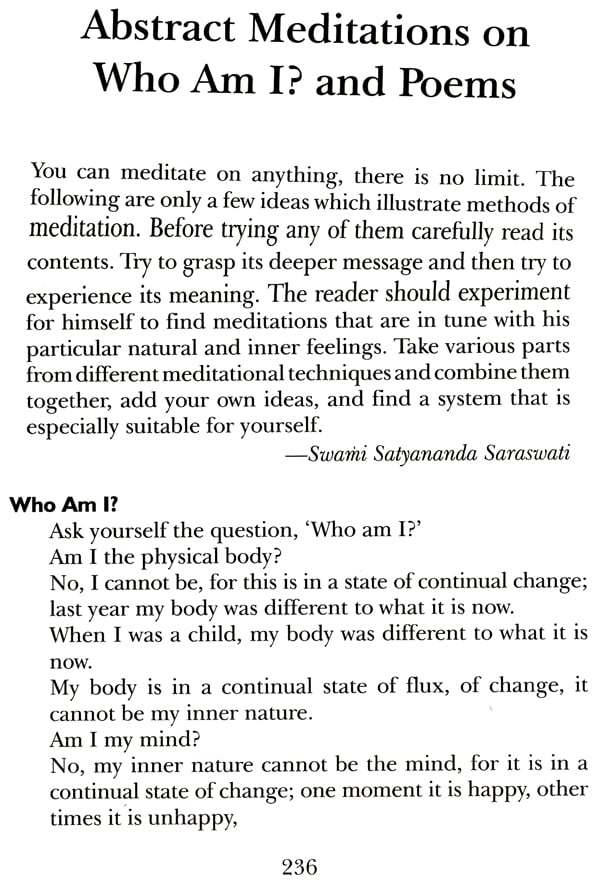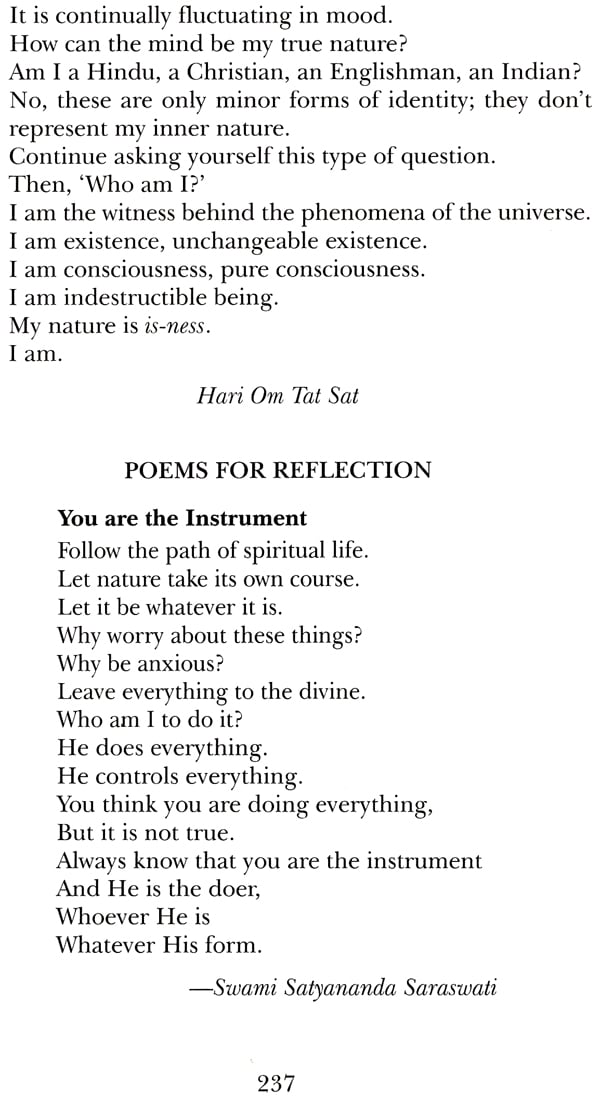
Swami Sivananda's 18 ITIES and The Practice of Pratyahara
Book Specification
| Item Code: | NAR820 |
| Author: | Swami Sivamurti |
| Publisher: | Yoga Publications Trust |
| Language: | English |
| Edition: | 2013 |
| Pages: | 260 (Throughout Color and B/W Illustrations) |
| Cover: | PAPERBACK |
| Other Details | 8.50 X 5.50 inch |
| Weight | 340 gm |
Book Description
Swami Sivamurti, Acharya of Satyanandashram Hellas, Greece, was born in Sydney, Australia. In 1976, she met her guru, Swami Satyananda Saraswati, at the Bihar School of Yoga in Munger, and was initiated into poorna sannyasa the same year. In 1977, she travelled to Greece to spread the teachings of Satyananda Yoga. In 1984, she established a residential ashram east of Athens, and centres in various cities and islands of Greece. She accompanied Swami Satyananda and Swami Niranjanananda on innumerable overseas tours. In 1993, she was recognized as a Yoga Acharya and in 2004, she was appointed an official emissary of Satyananda Yoga.
There are two kinds of yoga. One is the classical yoga in which we practise and advance in asana, pranayama, yama, niyama, pratyahara, dharana, and so on. The other is the yoga of Swami Sivananda, which is the expressive yoga, and its main theme is service. As long as we follow the aims of classical yoga, yoga remains a process to be perfected, but if we follow the yoga of Swami Sivananda, yoga becomes a lifestyle. When our life begins to express yoga, yoga no longer remains a one-hour practice to be done once a day. It becomes an attitude and awareness with which we live twenty-four hours of the day. At this stage, yoga enables us to express greater creativity and participation in the world.
The final outcome of yoga is not isolating ourselves from the world, but involving ourselves more deeply in the affairs of the world, knowing our place in it, our duties, and how we can make a difference in other people's lives. This is what Swami Sivananda called the 'divine life'. As we follow the yoga of Swami Sivananda, the gross nature is transformed. As we become more sattwic, more mature in wisdom and develop greater understanding, there is deeper identification with our environment and the world. It should be clear that yoga is not a path of isolation. We do not have to escape to the mountains to experience higher consciousness. We have to escape into the world to realize higher consciousness, and this is a question of training ourselves.
Training ourselves means managing our responses and reactions, attitudes, convictions, creativity and performance. Such transformation of a conditioned nature into a flowering nature is the 'divine life' described by Swami Sivananda.
Swami Sivananda said that we may continue with our yogic practices of asana, pranayama and mantra, however, we should also be able to express yoga in our normal environment when we are not performing the practices. For this to happen, the yogic concepts have to be ingrained in our life. After all, a computer will function only according to its programming and software. So, we have to replace the software inside and upgrade the programming of our mind. Where do we find such software? Where do we find a program that allows us to change our computer's performance? That possibility is seen in the 18 ITIES of Swami Sivananda:
Serenity, regularity, absence of vanity,
Sincerity, simplicity, veracity,
Equanimity, fixity, non-irritability,
Adaptability, humility, tenacity,
Integrity, nobility, magnanimity,
Charity, generosity, purity.
These are the 18 ITIES of Swami Sivananda which represent a new programming for our mental software. Therefore, along with asana and pranayama, the ITIES should be cultivated.
The practice of the 18 ITIES is a sadhana in its own right and it will bear fruit only if it is treated as such. Sadhana means spiritual effort and is the foundation of spiritual life. No sadhaka, spiritual aspirant, will progress without the integration of spiritual practice in his daily routine. There are four categories for the development of sadhana:
1. Define your intention: Sadhana is the attainment of excellence and perfection in everything that is done. It begins with involvement in constant, continuous awareness and focus.
**Contents and Sample Pages**















